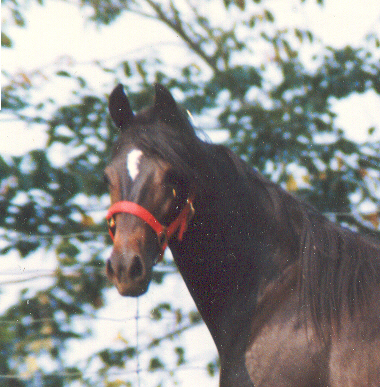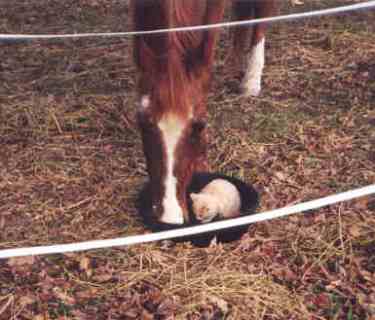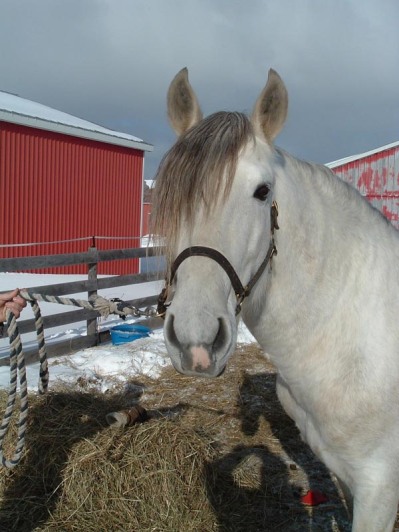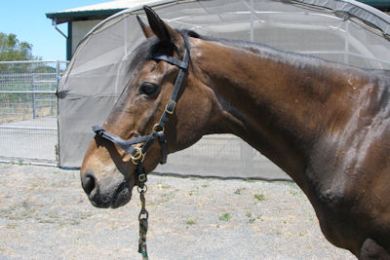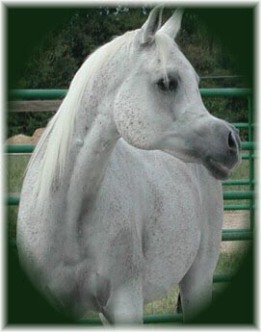Even though most of us know that we don’t (aren’t supposed to) ride the horse’s head, many still insist on commenting about the personal aesthetic aspect of such in conformation critiques. Rather than continuing to fight (and correct the validity of) a comment like; ‘She’s got a pretty, refined head’, in a conformation study, I’ll just talk about the kind of head that is a requirement for the horse to be useful, healthy and sound. Ergo, the kind of head you want to ride.
Profile: The horse’s profile (straight, convex or dished) is created simply by the relationship between the cranium and the face. Think of the cranium as a ball that extends from poll to eye socket, and think of the face as a shoebox that extends from the eye sockets to the tip of the muzzle. Changing how those two pieces sit relative to each other is what creates the horse’s profile.
Over the years people have selectively bred horses for exaggerated dished profiles, shortened faces and teacup muzzles, purposely (and ignorantly) breeding in facial faults that affect the horse’s ability to breath, chew, have properly rooted teeth with plenty of room, and easily hold a bit (or two in the case of double bridles). Over-bite, under-bite and other tooth misalignments, that would have seen the individual die in the wild without the advantage of human caretaking, processed feeds, soaked hay cubes etc…, now exist and propagate.
We also don’t want the horse’s head to look like that of a donkey or mule. In asinines the cranium (ball) is smaller. This causes the donkey’s neck vertebrae to attach to the skull from below the ears, unlike the horse whose neck vertebrae should attach to the skull from behind the ears. When the vertebrae attach from below the ears, it’s called ‘hammer-headed’. Most horses that are ‘hammer-headed’ are also ‘ewe-necked’; both serious faults in the horse.
Poll: This should be broad in the horse causing the horse’s ears to be set a good distance apart.
Forehead: Also needs to be broad so that the eye orbits are widely spaced and on the *sides* of the skull, not on the front. The orbits are higher placed on the cranium for ‘ox-headed’ breeds; Quarter Horses and Morgans as an example.
Eyes: Large and almond shaped. The eyeball should not extend beyond the orbital ridge, if that’s the case then the horse is ‘bug-eyed’ and it can indicate endocrine system issues. A ‘pig eye’ is a small eye, sometimes rounder and also a fault.
Muzzle: Like the poll and forehead, the muzzle should be broad with large nostrils. ‘Tea cup’ muzzle are a fault, directly affecting the ability for the horse to draw in air, as well, disrupting proper tooth rooting.
Mandibles: The lower jaw bones should possess depth for good tooth rooting and have plenty of space between them; no less than a hand’s width (4”).
Here is an example of one of those ‘pretty, refined’ heads. Let’s look more closely. This horse has a ‘straight’ profile. We can’t help but notice the exceptional broadness of forehead and the large, well-defined and well-placed eyes. The ears are equally as sculpted as the entire head with their turned-in tips. We might argue, though, that this horse lacks a touch of broadness in that poll. Below the eyes are classic inflated sinuses. The shorter face tapers (a bit too much, perhaps) to a smaller muzzle possessing large nostrils. We can surmise that this horse should have no issue pulling in air. The biggest question for this horse’s head is if there’s enough room for the teeth.
It may come as a surprise to many, but this is a purebred Standardbred, one that you certainly can’t label as having a ‘jughead’. Indeed, I’ve known many Standardbreds to have equally ‘pretty’ heads.
Racing Standardbreds are often required to wear two bits, a driving bit and an overcheck bit. This horse didn’t possess enough room in her mouth to comfortably carry an overcheck bit, so technically, though pretty, this is not an ideal head for her breed and purpose. To get around the lack of room in her mouth, she wore an overcheck rein with a leather strap under her chin. She did not have any chewing or teeth alignment issues.
This next is not a great picture, but I use this horse’s head as an example of eyes that are decidedly ‘frontal’ placed, rather than the more correct ‘side’ placed as the horse before. The other thing of note is that the horse’s jaw is narrower than its eye orbits. As with the previous horse, this head is lacking a bit of broadness to the poll, and is a short-faced, but without the tapering. Overall, this is not nearly as good of a horse head, but many would find it pleasing to look at nonetheless.
This is a classic convex profile typical of the noble breeds. The eye is large (don’t be fooled by the heavy ‘sleepy’ lid, and is placed lower on the skull than our previous two horses. There’s plenty of depth to the jowls. This is another short-faced horse that’s also rather short in the muzzle, but with good depth.
Here on the front view we can see he’s broad through the forehead, poll and muzzle. This is a good head despite its lack of refinement.
Here is another straight profile with a big, generous and well-placed eye. The jowls lack a bit of depth, but the muzzle sure doesn’t. This is a long-faced horse that should have plenty of bar length in its mouth to hold two bits.
Our viewing wouldn’t be complete without looking at a classic dished profile. This is a good head with plenty of broadness and depth throughout.
And this is an abomination.
Next time you’re looking at a horse’s head, see if you can determine what specifically about it that you’re attracted to and if those traits make for a good horse head, or if you’ve been fooled by irrelevant aesthetics that are detrimental to the horse.

